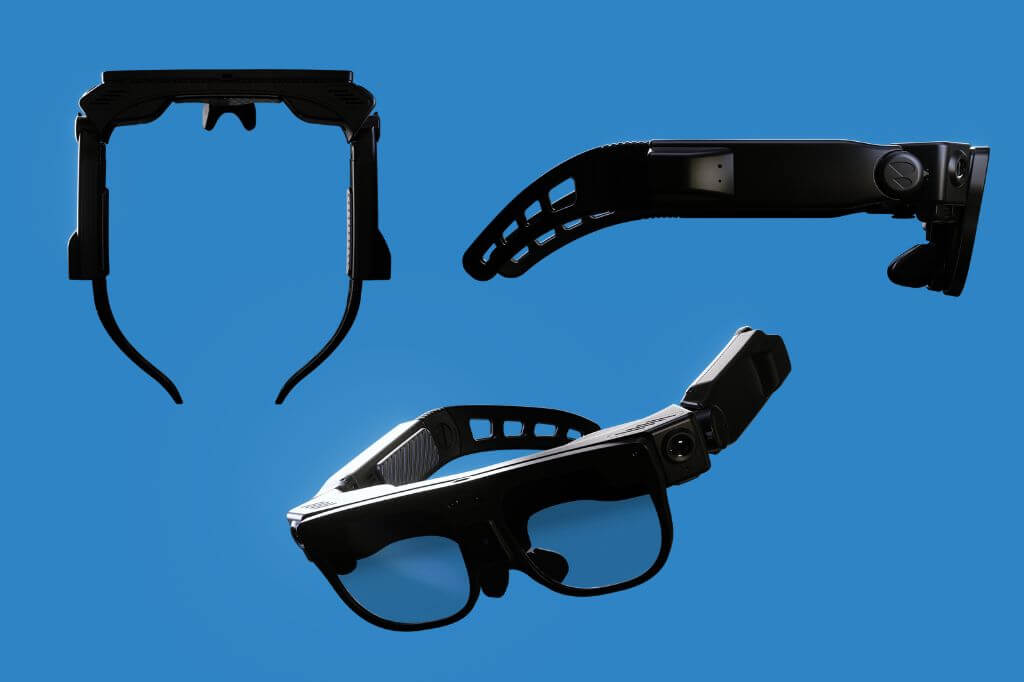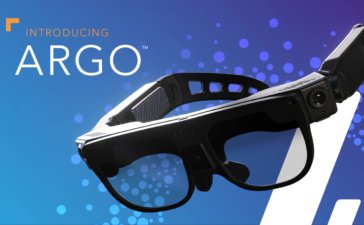DigiLens has been making groundbreaking components for a while now. And, last spring, the company released a developers kit – the Design v1. The company has now announced its first made-to-ship product, the ARGO.
A Look at the ARGO
DigiLens is calling ARGO “the future of wearable computing” and “the first purpose-built stand-alone AR/XR device designed for enterprise and industrial-lite workers.” That is to say that the device features a 3D-compatible binocular display, inside-out tracking, and numerous other features that have not widely made their way into the enterprise world in a usable form factor.

“ARGO will open up the next generation of mobile computing and voice and be the first true AR device to be deployed at mass scale,” DigiLens CEO, Chris Pickett, said in a release shared with ARPost. “By helping people connect and collaborate in the real – not merely virtual – world, ARGO will deliver productivity gains across sectors and improve people’s lives.”
Naturally, ARGO is built around DigiLens crystal waveguide technology resulting in an outdoor-bright display with minimal eye glow and a compact footprint. The glasses also run on a Qualcomm Snapdragon XR2 chip.
Dual tracking cameras allow the device’s spatial computing while a 48 MP camera allows for capturing records of the real world through photography and live or recording video. One antenna on either temple of the glasses ensure uninterrupted connectivity through Wi-Fi and Bluetooth.
Voice commands can be picked up even in loud environments thanks to five microphones. The glasses also work via gaze control and a simple but durable wheel and push-button input in the frames themselves.
The DigiLens Operating System
The glasses aren’t just a hardware offering. They also come with “DigiOS” – a collection of optimized APIs built around open-source Android 12.
“You can have the best hardware in the world, hardware is still an adoption barrier, but software is where the magic happens,” DigiLens VP and GM of Product, Nima Shams, said in a phone interview with ARPost. “We almost wanted the system to be smarter than the user and present them with information.”
While not all of those aspirations made it into the current iteration of DigiOS, the operating system custom-tailored to a hands-free interface does have some tricks. These include adjusting the brightness of the display so that it can be visible to the user without entirely washing out their surroundings when they need situational awareness.
“This is a big milestone for DigiLens at a very high level. We have always been a component manufacturer,” said Shams. “At the same time, we want to push the market and meet the market and it seems like the market is kind of open and waiting.”
A Brief Look Back
ARPost readers have been getting to know DigiLens for the last four years as a component manufacturer, specifically making display components. Last spring, the company released Design v1. The heavily modular developers kit was not widely available, though, according to Shams, the kit heavily influenced the ARGO.
“What we learned from Design v1 was that there wasn’t a projector module that we could use,” said Shams. “We designed our own light LED projector. … It was direct feedback from the Design v1.”
A lot of software queues in the ARGO also came from lessons learned with Design v1. The headset helped pave the way for DigiOS.

“Design v1 was the first time that we built a Qualcomm XR2 system, and ARGO uses the same system,” said Shams.
Of course, the Design v1 was largely a technology showcase and a lot of its highly experimental features were never intended to make it into a mass-market product. For example, the ARGO is not the highly individualized modular device that the Design v1 is.
The Future of DigiLens
DigiLens still is, and will continue to be, a components company first and foremost. Their relationship with enterprise led the company to believe that it is singularly situated to deliver a product that industries need and haven’t yet had an answer for.
“I’ve seen some things from CES coming out of our peers that are very slim and very sexy but they’re viewers,” said Shams. “They don’t have inside-out tracking or binocular outdoor-bright displays.”
With all of this talk about mass adoption and the excitement of the company’s first marketed product, I had to ask Shams whether the company had aspirations for an eventual consumer model.
“Our official answer is ‘no,’” said Shams. “Companies like the Samsungs and the Apples of the world all believe that glasses will replace the smartphone and we want to make sure that DigiLens components are in those glasses.”
In fact, in the first week of January, DigiLens announced a partnership with OMNIVISION to “collaborate on developing new consumer AR/VR/XR product solutions.”
“Since XR involves multiple senses such as touch, vision, hearing, and smell, it has potential use cases in a huge variety of fields, such as healthcare, education, engineering, and more,” Devang Patel, OMNIVISION Marketing Director for the IoT and Emerging Segment said in a release. “That’s why our partnership with DigiLens is so exciting and important.”
Something We Look Forward to Looking Through
The price and shipping date for ARGO aren’t yet public, but interested companies can reach out to DigiLens directly. We look forward to seeing use cases come out of the industry once the glasses have had time to find their way to the workers of the world.



